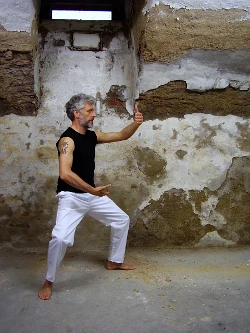Tai Chi and Qigong
Tuesday, February 20, 2018, 11:50 AM
Supporting Heart Health with Traditional Chinese Medicine
February is Heart Month, the month in which the health community shines a light on the importance of cardiovascular health. The Government of Canada reports that 2.4 million Canadians over the age of 20 have ischemic heart disease. Heart disease is also the second leading cause of death in Canada.
Lifestyle factors that increase the risk of heart disease include high levels of stress, poor diet, lack of exercise, and smoking.
Taking a holistic approach to managing these lifestyle factors can help mitigate the risks of developing cardiovascular disease. Tai chi and qigong are two ancient practices that combine many important elements to support a healthy, active lifestyle.
Tai chi and qigong are similar practices. In fact, their respective elements influence one another. Both practices are rooted in the philosophy of Taoism and Buddhism, and both focus on the flow of energy (qi) in the body.

Whether or not you believe in the presence of qi, or identify with eastern medical systems, there are many research-backed ways that tai chi and qigong can support a healthy heart.
Tai Chi
Tai chi dates back approximately 4,000 years and is influenced by several styles of martial arts. The practice is a series of defined postures that are linked together with slow, flowing movements. It is a graceful practice that looks much like a dance.
There a few ways in which tai chi can help reduce the risk factors of heart disease, including promoting physical activity and managing stress levels.
Tai chi is strongly focused on physical strength conditioning, flexibility, and resilience. It is a whole-body treatment that positively impacts the physical health of the practitioner. Tai chi is a great choice for older adults because the movements are low-impact and controlled, reducing the risk of injury.
When it comes to reducing stress, the focus of tai chi on mental clarity can be very beneficial. Research shows that meditation lowers heart rate and blood pressure, leading to reduced levels of stress. One study shows that long-term meditation also improves blood flow to the heart and improves tolerance to exercise.
In another study that evaluated the impact of long-term tai chi practice on the overall cardiovascular health of adults over the age of 65, researchers found that those who practised tai chi for over 10 years had improved balance, flexibility, and cardiovascular fitness compared to adults who did not engage in the practice.
Qigong
Like tai Chi, qigong is also a centuries old practice, dating back about 3,000 years.

"Qi" is the energy of the body. In traditional Chinese medicine, it is believed that balancing qi increases strength, resiliency, vitality, and resistance to stress and illness. "Gong" means achievement or expertise that is accomplished through consistent practice.
Qigong is focused on physical movement and meditation the same as tai chi is. In fact, the practice is often referred to as movement meditation.
A defining element of qigong is that focused breathing techniques are used to stimulate and regulate the flow of energy through the meridians of the body. A part of the Chinese medical system, meridians are channels through which qi and the other fundamental substances - like blood - flow. They function as a network, much like a map throughout the body.
In addition to the previously stated benefits of exercise and meditation on cardiovascular health, research supports that deep breathing lowers heart rate and blood pressure. Thus, qigong is a great practice for those with cardiovascular problems.
The Takeaway
Practicing tai chi and qigong is a low-risk, effective way to support your cardiovascular health.
The combination of mediation, physical exercise, and controlled breathing help to reduce stress, increase activity levels, and promote a healthy lifestyle. These are all essential elements in reducing the risk factors of heart disease.

